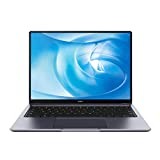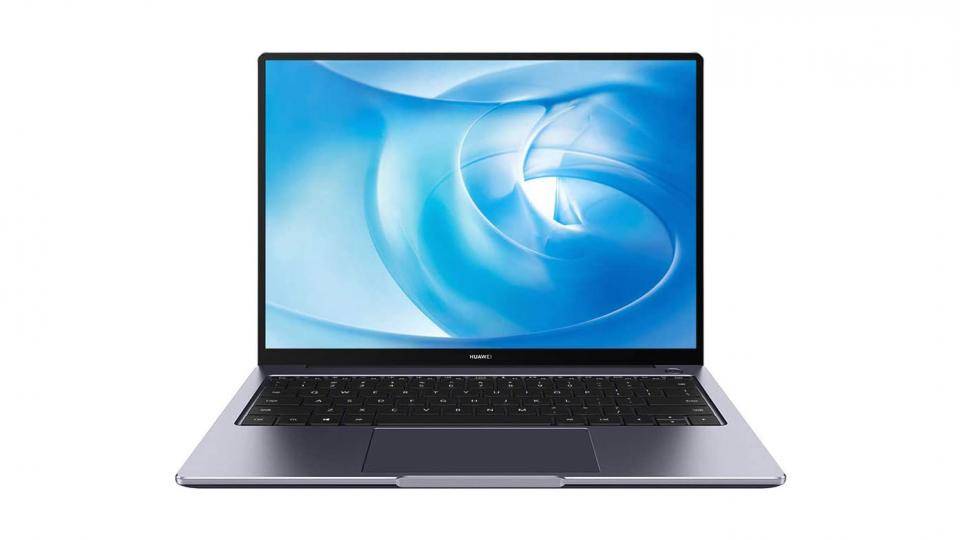The Huawei MateBook 14 is a remarkable piece of kit. Not only does it abide by Huawei's time-honoured practice of producing exceptionally well-priced, well-built laptops, it also happens to be astonishingly – and I mean astonishingly – powerful. This sub-£1,000 laptop might look like a MacBook, but the resemblance isn't just skin deep. As Windows 10 ultraportables go, this one packs a punch.
Huawei MateBook 14 (2020) review: Performance
Let's start with what's under the hood. This is a laptop that should make Intel executives break out in a sweat. It’s a remarkable demonstration of not only the power tucked into AMD’s Ryzen 4000 processors but of the compactness of their design and the price at which AMD can churn them out.


That Huawei can produce a laptop costing less than £1,000 to rival hulking beasts for raw speed is hard to believe. The main reason for that speed is eight chunky cores that are clocked at 2.9GHz, but – in this configuration – are capable of jumping up to 4.3GHz when required. Even when pushed by our multitasking benchmark, where every core is maxed out, they were quite happy to run for several minutes at around 3.4GHz.

While Huawei’s fans had to kick in to keep things cool, the noise never rose above a mild hum. If you run tasks that demand power on the move, the MateBook 14 will amaze you. To see the effect of this power, you only need to look at our test results.
A sub-£1,000 laptop scoring 248 in our benchmarks would have been unthinkable before this laptop, as that’s threatening the kind of scores we saw in hulking beasts such as the £2,249 Gigabyte Aero 15 OLED. With a total of 255 when we tested it, the Gigabyte includes a Core i7-10875H, sitting near the top of Intel’s range.
What you don’t get here is gamer-satisfying levels of 3D acceleration, with the integrated Radeon graphics no match for even a modest GPU such as the GeForce GTX 1650. It’s faster than Intel’s integrated graphics, however, with a playable 39fps in F1 2020 at 1080p (High settings), and it even managed 31.6fps in 2019’s Metro Exodus at 1080p – although I had to drop settings to Low. In contrast, Intel’s graphics score around 10fps and 5fps in the same tests.
Huawei MateBook 14 (2020) review: Display
The screen resolution on offer is actually higher than Full HD at 2,160 x 1,440, with a good-quality IPS screen that peaked at 417cd/m² brightness in our tests. Its colour performance is highly respectable considering the price of this laptop, covering 89% of the sRGB gamut and 64% of DCI-P3 with an average Delta E of 1.66 – that’s colour accuracy enough to fool all but professional eyes. Combine it with a 1,586:1 contrast ratio and there’s little to complain about whether you’re watching films or fiddling in Excel.
The screen supports touch input, which occasionally comes in useful, but you’re still going to rely on the keyboard and touchpad most of the time. There isn’t enough “feel” on the keyboard to make me fall in love with it, but it’s pleasant to type on for long periods thanks to the large and well-separated keys, with the only sacrifices being Home, End, PgUp and PgDn. The huge touchpad is responsive enough that a travel mouse isn’t necessary.
READ NEXT: Our full Huawei MateBook 13 (2020) review
Huawei MateBook 14 (2020) review: Connectivity
Huawei builds the fingerprint sensor into the power button, but it continues to embed the webcam into a physical key. Press the middle button on the Function key row and up it pops, giving onlookers the ideal angle to admire any secondary chins (even if you don’t normally have one).
This is a real shame, as the quality of the camera itself is more than good enough for video conferencing. The MateBook is charged through the USB-C port on the left-hand side of the chassis, and I have to praise the incredible portability of Huawei’s phone-style charger. Even the middle prong of the plug folds down.
This compensates for a mediocre battery life of 7hrs 6mins in our video-rundown test, which is the obvious side effect of having such a powerful processor inside. Still, this is a highly portable laptop. With a stylish lilac finish to the aluminium-alloy chassis, it looks and feels like a premium machine, and while it’s hardly featherlight at 1.5kg, its compact dimensions make it easy to slip into a bag.
Huawei squeezes a full-size HDMI output into the 15.9mm-thick chassis, along with a 3.5mm jack and two USB-A ports on the right-hand side. There’s no Wi-Fi 6, which is an omission I suspect most people can live with for the life of this laptop.
READ NEXT: The best laptops for kids of all ages
Note the one-year warranty, but it should be possible for a repair shop to replace the battery when it reaches the end of its practical life. Huawei doesn’t lumber you with any bloatware, with its PC Manager software surprisingly useful – especially so if you own a Huawei or Honor phone, as you can hold it over the trackpad to activate Huawei’s Share feature (this makes it easy to move files from one to the other).
Less useful is its decision to split the 512GB SSD into two partitions, but a quick trip into Disk Management will sort that out. However, this is just a minor bugbear – as is the position of the webcam.
Huawei MateBook 14 (2020) review: Verdict
When you’re saving so much money compared to its rivals and buying a laptop that has enough power to last many years, however, the reasons to buy hugely outweigh such small irritations. The MateBook 14 cements itself as a magnificent value ultraportable capable of outshining many more established Windows-dependent brands. If you can look past the battery life, you'll have bought yourself a fantastic laptop for a very competitive sum.